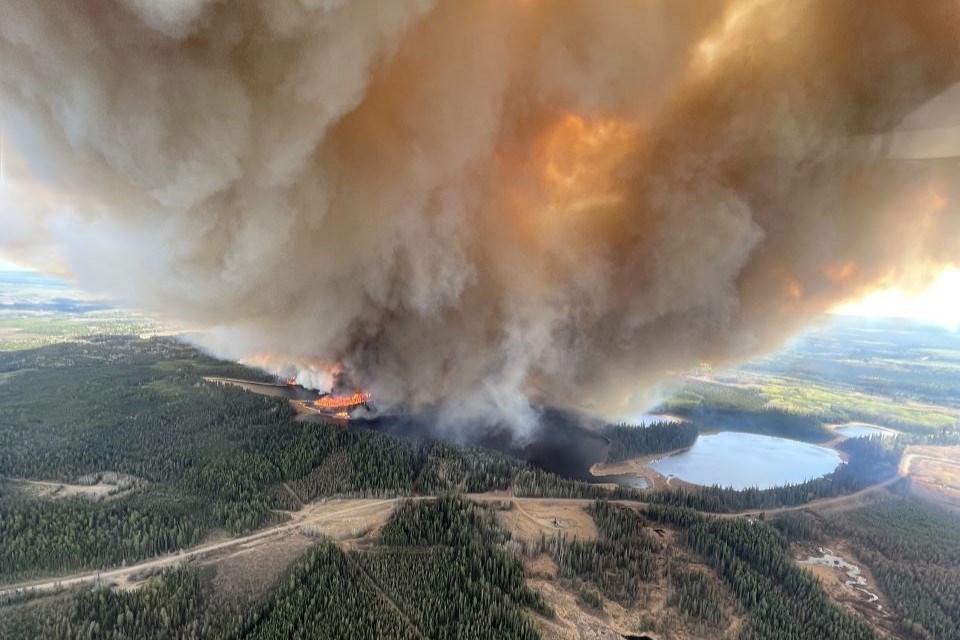Last year’s wildfire season was certainly historic, but how historic was it and what was the bigger ecological picture?
The Alberta Biodiversity Monitoring Institute (ABMI) recently produced a science letter called that helps to make it easier for laypeople and decision-makers alike to understand the answers to both of those questions.
For instance, the science letter documents that last year’s wildfires burned 6.6 per cent of the forested area of the province. At approximately 3.3 million hectares in size, that area disturbed as much forest in Alberta as the 11 previous wildfire years combined.
“I think some readers of these large numbers get a little bit overwhelmed,” said applied ecologist Brandon Allen, one of the three authors of the paper.
“I think people's minds go a little blank. We try to contextualize that to be an area similar to Vancouver Island. You could start to capture that a little bit of, ‘Oh, that's a big place that was impacted by the fires.’”
As another comparison, the report equates that area to 50 times the size of Edmonton.
Applied ecology works to bridge that gap of understanding, but in this case, it also strives to offer a broader context of how wildfires can serve benefits to the world.
It strives to do the best research in order to understand how biodiversity is responding to pressures and then making sure that information is offered in a way that can be used for decision-making purposes.
Lead author Dave Huggard brought his forestry background with the province of British Columbia while co-author D.R. Roberts expertise is in climate modeling to help round out the larger scientific view of what all the outcomes of Alberta’s wildfires were.
While many people already know that the greatest areas that burned were in the northern and west-central sectors of the province, the science paper reveals that all the destroyed trees resulted in a drop in the average forest age across the province.
Allen explained why forest age is an important measurement for researchers and managers and why it needs to be intelligible to a larger audience. It helps to distill a complicated idea.
“You want old forests, but there are not as many of them. You want some young forests, and you hope that they live long enough to become an old forest. We use average age as a way to try and represent that really complicated distribution of [forest] stand ages on the landscape.”
Allen noted that if the average forest age is closer to 60 years old, then Alberta won't have any old forest anymore. This would likely result in a forest stand’s inability to support its usual roster of animal species.
While the average forest age was about the same from 2010 to 2021, last year substantially lowered it.
The report reveals that all stand types ended up with average ages below their average ages in 2010 after the 2023 wildfires. For instance, treed lowlands (such as wooded fens, bogs, and swamps) showed the largest decline in average age with a 6.1-year drop from 2022 to 2023. The drop in average age for pine and spruce added to the declines from 2010 to 2021, making pine stands 8.0 years and spruce stands 6.1 years younger respectively.
The declines in average forest age were much greater where there were more fires in 2023. The Northern Mixedwood natural subregion (north of 58 degrees latitude) declined from 68 years in 2010 to 61 years in 2021, then dropped to 47 years after the 2023 fires.
“I think the interesting thing in this report is that it wasn't really a forest type or habitat type that was spared,” Allen said.
“It really was some of everything that was burning. It wasn't just deciduous forest. It wasn't just old forest or young forest. It was just interesting to see that the fire was really a disturbance that didn't discriminate between habitat types on the landscape.”
The damage of wildfires is only one perspective, however. The applied ecologist confirmed that there became some positive results out of the smoke and ash. While it’s true that many species lost habitat with one in eight species losing more than 10 per cent, the wildfires opened up areas for regrowth.
“That fire can open up new habitats to them. I found it really interesting to find that we are predicting some species are going to see benefits because of the fires on the landscape. Certain species of woodpecker really thrive in these disturbed recent burns. For them, this is generally a good thing in this kind of context.”
He acknowledged that lots of species will take more of a negative result because they need old forest habitats.
The woodland caribou lost 5.2 per cent of its preferred older treed lowland and upland conifer habitat while losses were higher in the northern caribou ranges: 13.7 per cent for the Caribou Mountains and 12.7 per cent for the Bistcho herds.
Some corollary factors might likely also play into how the species comes out worse than before. Lichen is a staple in the caribou diet but overall, most lichen species lost habitat last year.
Shrubs, on the other hand, may quickly regrow in some recently burned areas. Since shrubs provide food for moose or deer, predators such as wolves might find themselves more easily fed leading to larger populations of predators of threatened herds like the caribou.




